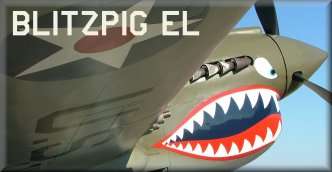
 |
|
#621
|
|||
|
|||
|
Introducing shadow shaders in OGL optimization would bring IL2 1946 leaps and bounds forwards.
Even if it were just the cockpits that got the shadow treatment |
|
#622
|
|||
|
|||
|
Uh. My card doesn't support OpenGL 2.0. I depend on the game to still be close to the original specs, if you want fancy graphics, maybe CLOD?
|
|
#623
|
|||
|
|||
|
Quote:
Because of this we are asking for this option can be enabled or disabled by the user as an option in SETTINGS SETUP. Maybe adding one more option in settings like ULTRA HIGH or as a simple switching SHADOWS ON/OFF Who want to use, use, who does not want to use, just disable the option. Like any other option in the setup. The user chooses he wants to use this settings or not. sorry my english. |
|
#624
|
|||
|
|||
|
Quote:
Your English is good enough to convey your thoughts, don't you worry. |
|
#625
|
|||
|
|||
|
What I saw about AnKor work, we could change DirectX 9 feature in the game like he did with CFS3... Like better water, lighting, smoke shadow, water reflection, self-shadowing, etc.
|
|
#626
|
|||
|
|||
|
I'm with you there. I'd bet nearly noone plays IL-2 for its good look by now. The content on the other hand makes it shine. Better to improve that aspect further IMHO.
|
|
#627
|
||||
|
||||
|
Exactly, because content is the problem with every single "replacement" for IL2 that is currently being developed, or was so.
CloD is still just about 109e vs. Spits and Hurries... Sadly stillborn and a dead end. DCS WW2, well, maybe in 10 years they might have two or three maps and perhaps 4 aircraft flyable... BoS, is on thin ice financially, is working against an almost impossible time constraint, and will have very limited plane sets and a single map, and will have to prove itself before I, and lots of others put our cash on the barrel head. IL2/46 will be the WW2 air combat sim of choice for some time yet.
__________________
 Personally speaking, the P-40 could contend on an equal footing with all the types of Messerschmitts, almost to the end of 1943. ~Nikolay Gerasimovitch Golodnikov |
|
#628
|
|||
|
|||
|
ElAuren's is right... Newer products have new and better engines from the get go and that is where the future will be but IL-2 1946 has enormous strength in the variety and depth of detail of content. It will take a successor years to get there.
I will say that I think IL-2 Battle of Stalingrad is the most likely in my mind to succeed. It's launching with 8-10 planes which is about what the original IL-2 Sturmovik launched with in 2001. Give it some time.
__________________
Find my missions and much more at Mission4Today.com |
|
#629
|
|||
|
|||
|
IL2 Sturmovik 1946 interface is almost perfect.
No need to do something different as the clickable panel and other real bullshit they did in Cliffs of Dover. Improve graphics would be enough. The same interface, the same variety of aircrafts and maps from IL2 1946 with better graphics would have a new game a great success. IL2 1946 should be the basis for any other simulator that wants to succeed. It's not because i'm accustomed to the controls or the interface. It's because it really is the best system. Here in Brazil we have a phrase for this, something like "should not make changes on the team that is winning". I do not know if IL2 BOS will be a success. It may seem so at first because it is new, but it is limited. Only one map, only one scenario, only German and Soviet aircraft ... The CLOD is equal and it's boring. I have the CLOD and I refuse to play that crap. And who wants to fly P51 does what ? I like the variety of IL2 1946. I have HSFX and UP3 with DBW. If they can improve the graphics i'll fly the IL2 1946 by another 20 years. No other simulator outperforms the IL2 1946. sorry my english again |
|
#630
|
|||
|
|||
|
Well I do have CloD and with all the ATAG Patches it is beautiful. When I want to see nice landscape, and water and when I want to see the sun playing on the control panel, then I fly around with CloD for 10 or 15 minutes.
When I want to have a WW II airwar sim, then I turn on Il-2 1946 and fight on hundreds of maps with hundreds of different aircraft. And when I am in a fight I really don´t have time to enjoy the landscape or care about some nice little shadows ... |
 |
| Thread Tools | |
| Display Modes | |
|
|